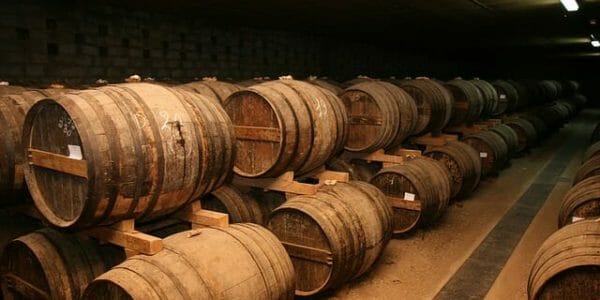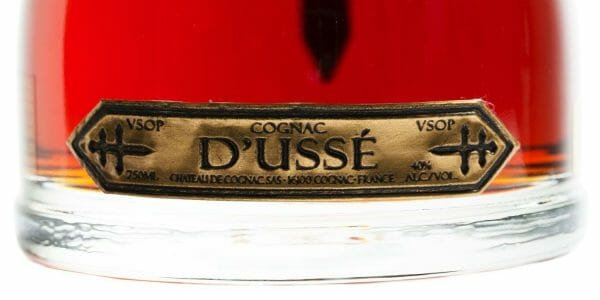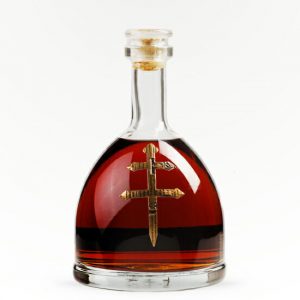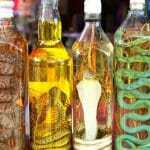What do Winston Churchill, Jay-Z, and millions of people in China have in common? They all enjoy Cognac by the crate-full! Okay, so crate-full might be a bit of a stretch for Churchill, but it’s no secret that Hip-Hop culture loves them some Gnac (short for Cognac, obviously).
From Tupac to Kanye and everyone in between, there’s no shortage of rap lyrics about Cognac, especially Hennessy. But according to Forbes, 80% of Hennessy sales occur in Asia. In fact, if 11% of China bought just one bottle of Cognac a year, distilleries wouldn’t be able to keep up with demand. In order to spread the love, Cognac is often placed on allocation. This means that the limited 12 million cases produced each year are distributed to their major consumer countries based on demand, but once it’s gone, that’s it until the next year. This makes Cognac exclusive and in high demand, especially in China.
The French themselves only account for 3% of Cognac consumption. They prefer Scotch. For every case of Cognac exported, the French consume a case of Scotch, to the tune of 12 million cases.
So, what is it about this drink that’s got Hip-Hop hyped and China cheering? Find out for yourself from our crash course in Cognac!
Cognac 101

What is Cognac?
The short answer is Brandy distilled in the Cognac Region of France. The long answer is much more interesting.
Cognac was created by accident when 16th century farmers removed the water from wine to make it cheaper and easier to transport. Taking the water out and you can transfer more alcohol per barrel with the same tax by volume. Rather than add the water back in once they shipped the “eau-de-vie” (the water-less wine concoction), they discovered a deliciously potent amber liquor instead. Voila, Cognac was born.
How's it made?
Think of eau-de-vie as the juice-concentrate version of a box of wine. Basically, the eau-de-vie is made like wine (fermenting grapes for a couple weeks). The wine then goes through a double-distillation process, which results in a color-less eau-de-vie that’s about 70% alcohol. Before it can officially be dubbed Cognac and shipped to thirsty Americans, it has to be aged for a minimum of two years in oak barrels. Once it’s aged to perfection, most distilleries use a mix of different eau-de-vie to create a unique blend for every batch of Cognac.
How's it different from Brandy?
You may be thinking this process sounds suspiciously similar to Brandy. Shh, don’t tell anyone, but they’re pretty much the same thing. The difference is pretty simple. Just like a bottle of bubbly must be made in the Champagne of region France to call itself Champagne, so must Cognac be made it the Cognac region of France. In the U.S, we make Brandy from grapes that taste very similar to Cognac (apparently Wisconsin loves the stuff), but Grape Brandy just doesn’t roll off the tongue like Cognac. Cognac connoisseurs swear by the particular grapes, yeasts, and climate of the Cognac Region, all of which play a major role in the fermenting process and it’s final, elegant flavor.

What's with all the extra letters on the label?
Just like wine, whiskey, and George Clooney, Cognac only gets better with age. Because many distilleries use a blend of eau-de-vie in each batch of Cognac, they’ve created a grading system based on the age of the youngest eau-de-vie in the blend. Check out this easy breakdown:
VS: Very Special. This is standard stuff, aged for the industry minimum of two years. It may include eau-de-vie aged longer, but at least one or more in the blend was aged for just the minimum of two years.
VSOP/Reserve: Very Superior Old Pale. If you spot a bottle labeled VSOP or Reserve, that means the youngest eau-de-vie has been aged at least 4 years.
XO: Extra Old. These bad boys feature a blend where the youngest party member has aged at least six years. This designation is set to change to 10 years in Spring 2018. Cognac aged for six years will then be labeled “Napoleon” and the XO label will be reserved for bottles aged 10 years or more.
How do I drink it?
Depends on what kind of Cognac you’ve got. If you have a younger blend, like a VS, you’re going to want to use it for mixed drinks. Some popular choices are the Sidecar, Stinger, and French Connection. If it’s your first time trying Cognac, we suggest trying the Sidecar. It’s got a hint of sweet that makes it a great after dinner drink. You can get the recipe here.
Generally, the older the blend, the better the flavors. So, if you have a nice VSOP or any XO, we recommend neat or on the rocks.
Why Should I try it?
Ever wish your wine was three times stronger? Hello, Cognac.
If you prefer whiskey, just think of Cognac like Whiskey’s cool cousin. Both aged in oak barrels, they share a flavor palate. But, Cognac is even smoother than it’s Irish/American cousin. Who doesn’t love a French accent and a stylish exterior?
If your preference is a nice stiff drink, Cognac has plenty to choose from. The Sidecar (recipe here), French Connection, and Between the Sheets are all Cognac classics. You can always get creative and come up with your own concoctions too. There are no rules when it comes to enjoying Cognac.
What kind should I buy?
Although Cognac is made in France, many brands have been popularized here in the United States. So much so that music mogul Jay-Z even invested in the D’USSÉ brand when it launched in 2012.
With or without the high-praise of a hip-hop king, we recommend D’USSÉ for Cognac drinkers young and old. If you want to enjoy a mixed drink, we suggest D’USSÉ VSOP. If you’re in the mood to sip some neat like Hova from his Grammy, try D’USSÉ XO. Both are reasonably priced considering their grade, and both have a uniquely bold, blended flavor that might just convince you to make Cognac your go-to drink.

Where can I get a bottle?
No need to head to the store, you can get Cognac delivered to your door in as little as 30 minutes! From VS to XO and everything in between, we’ve got you covered. For a limited time, you can use code VSOP for $15 off D’USSÉ VSOP!


